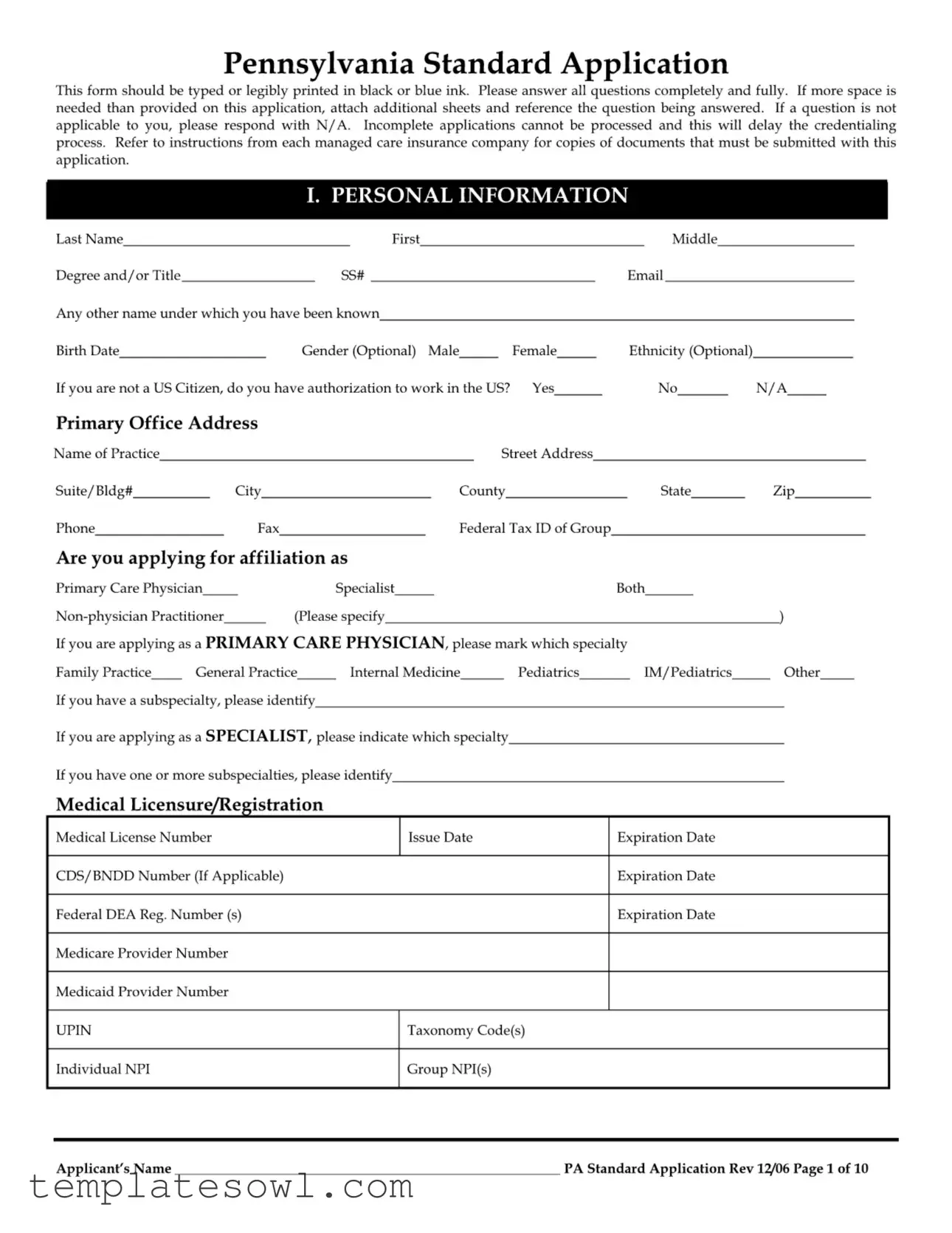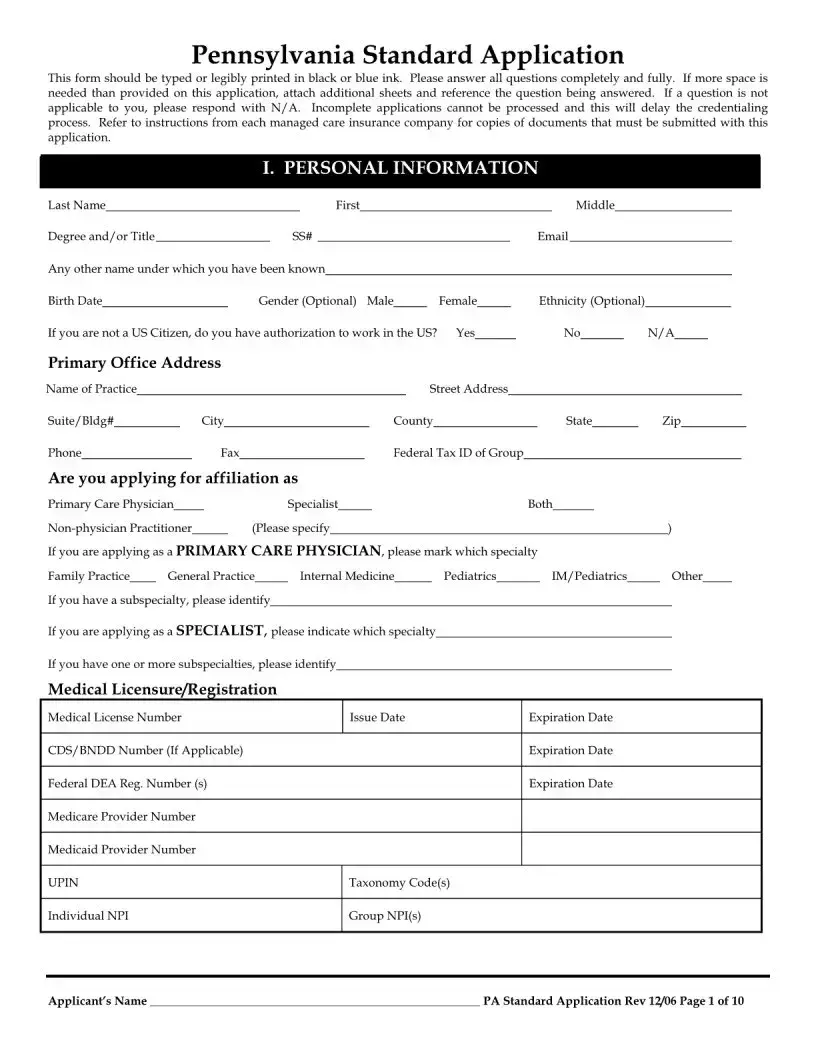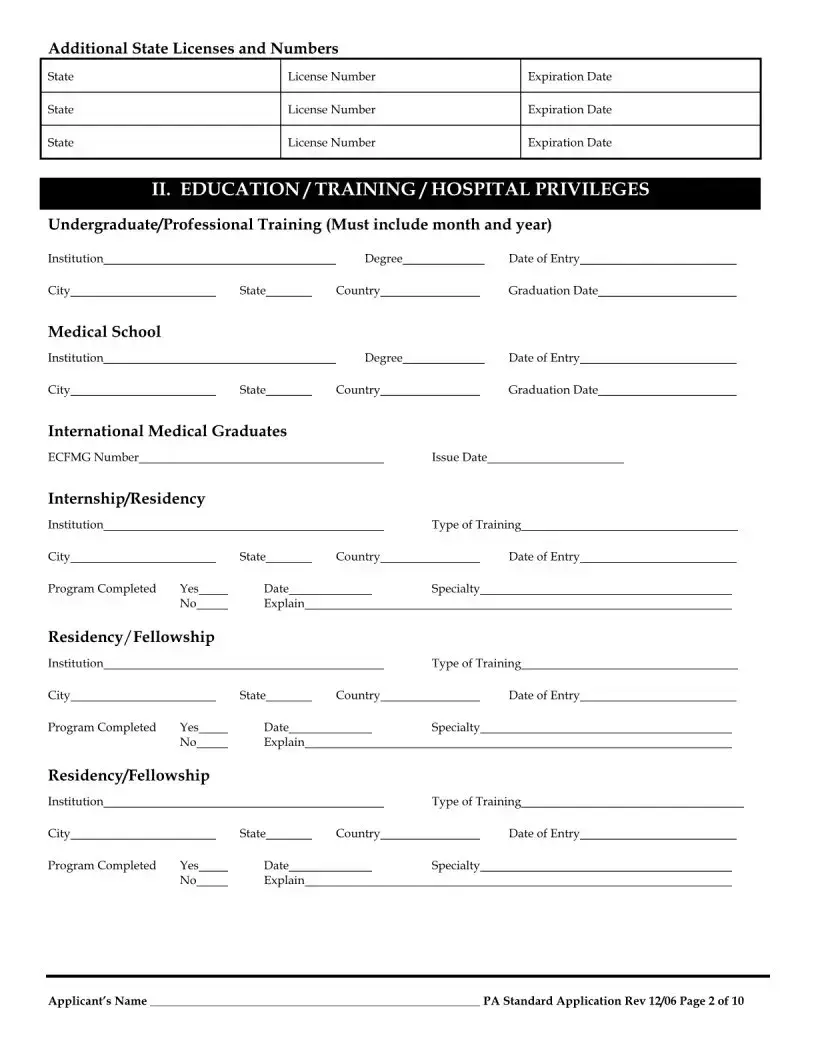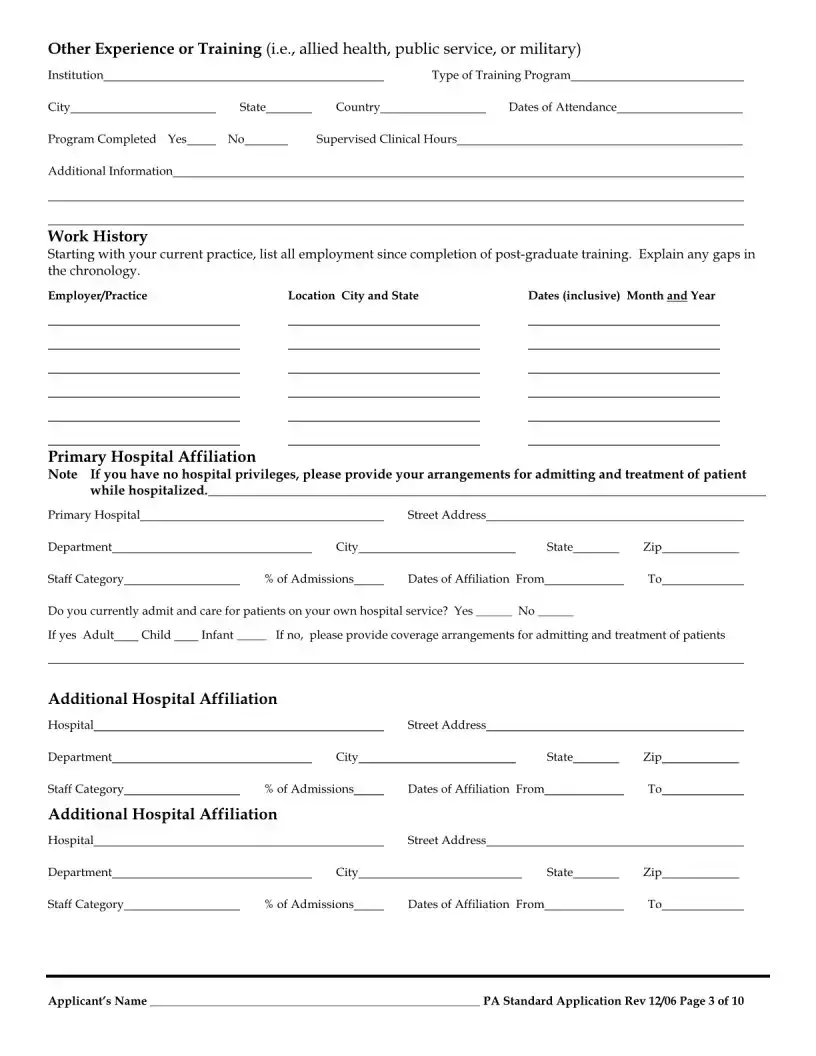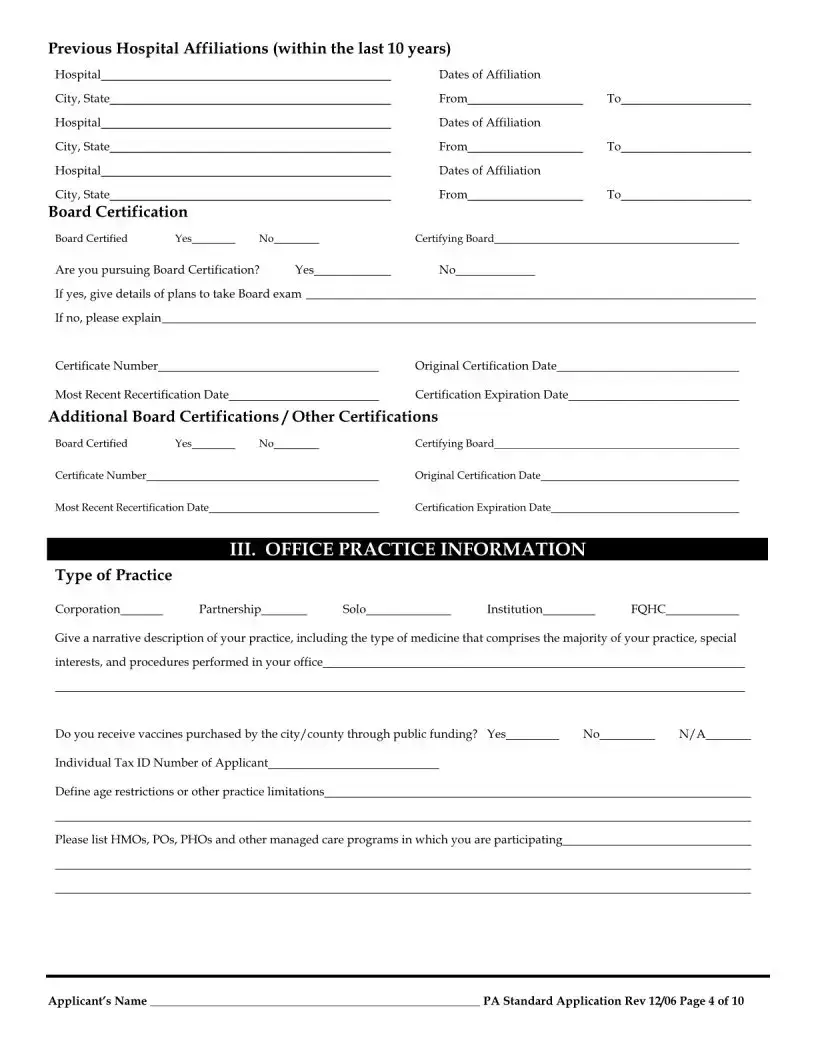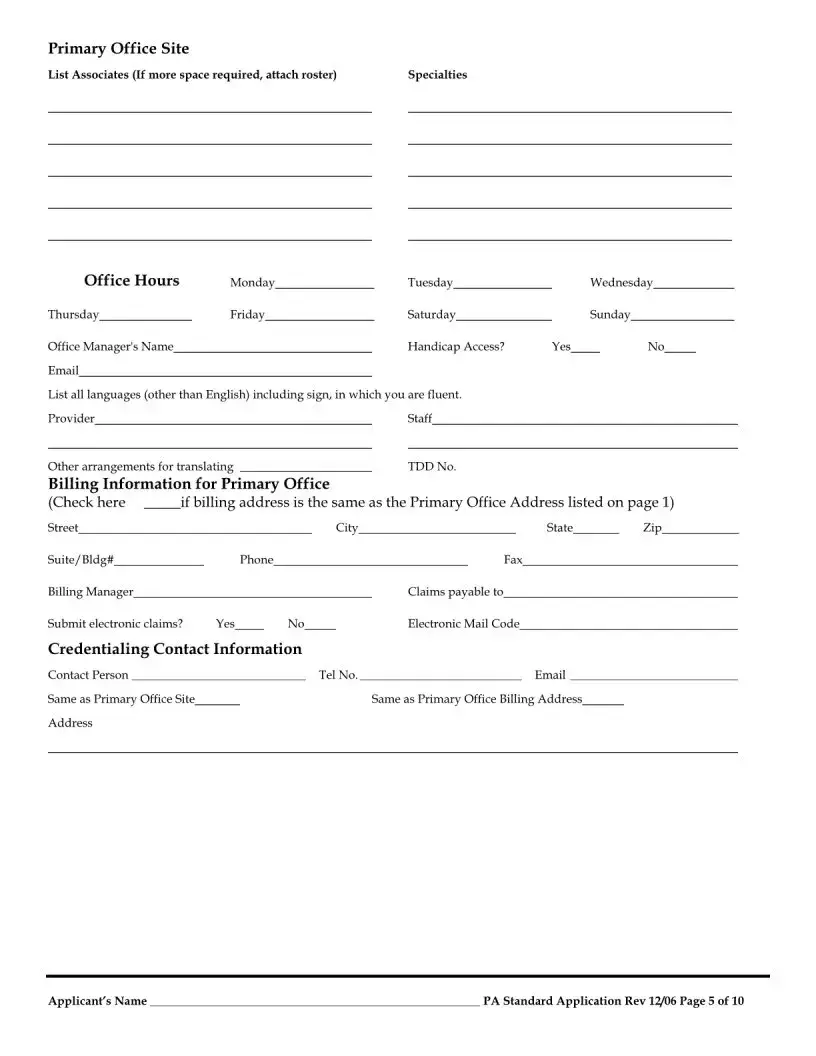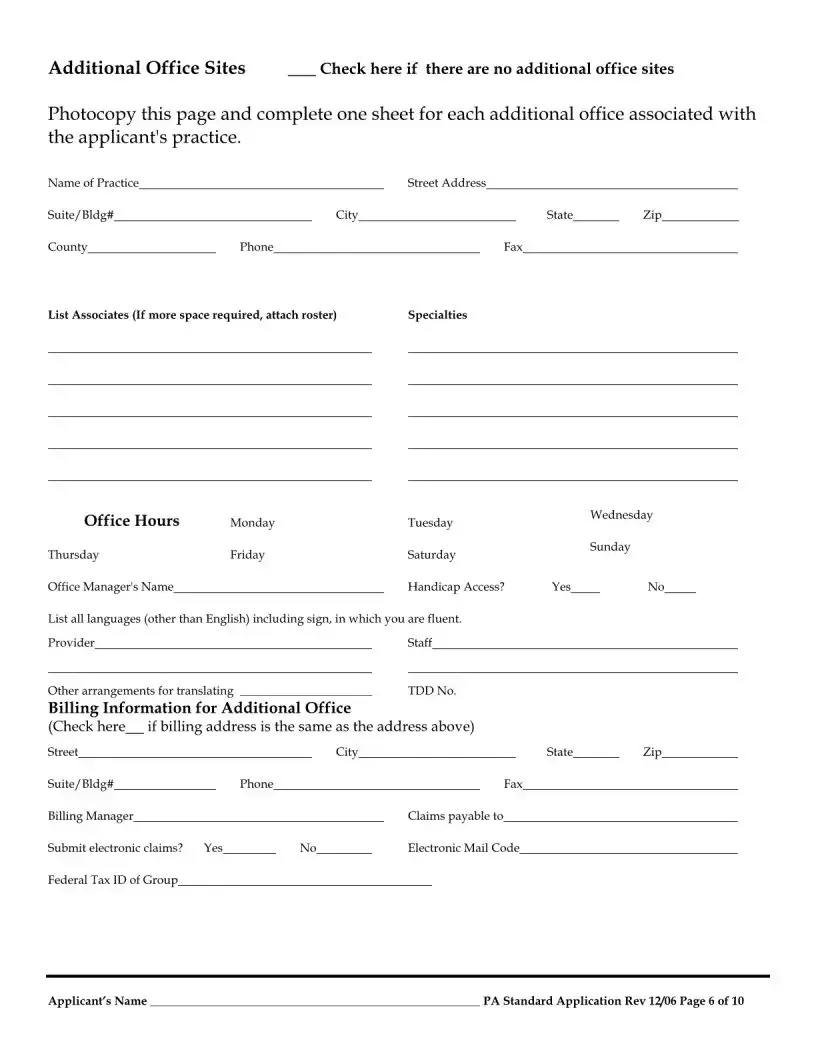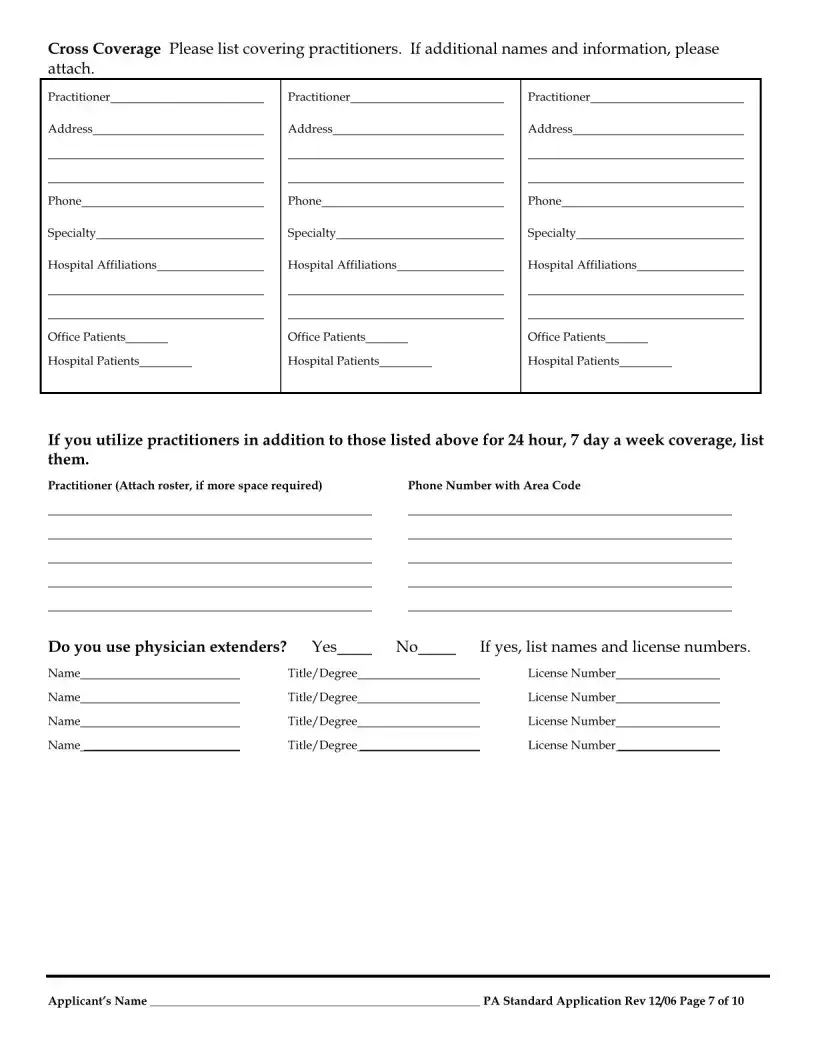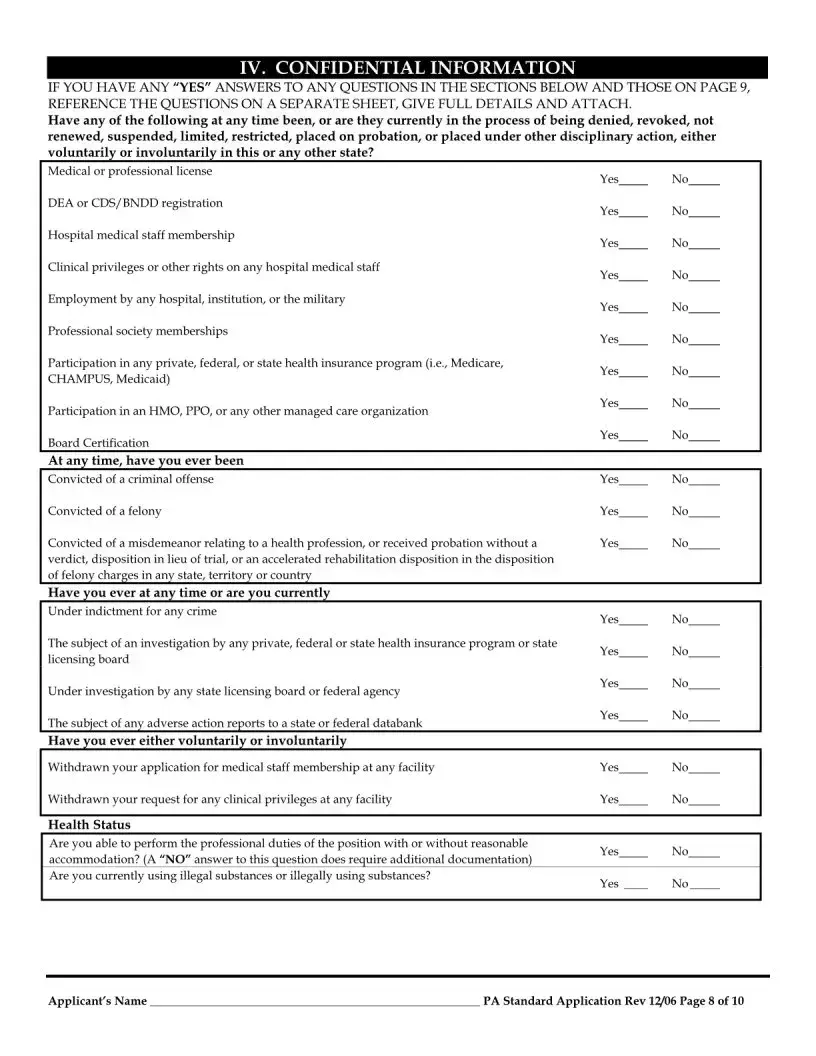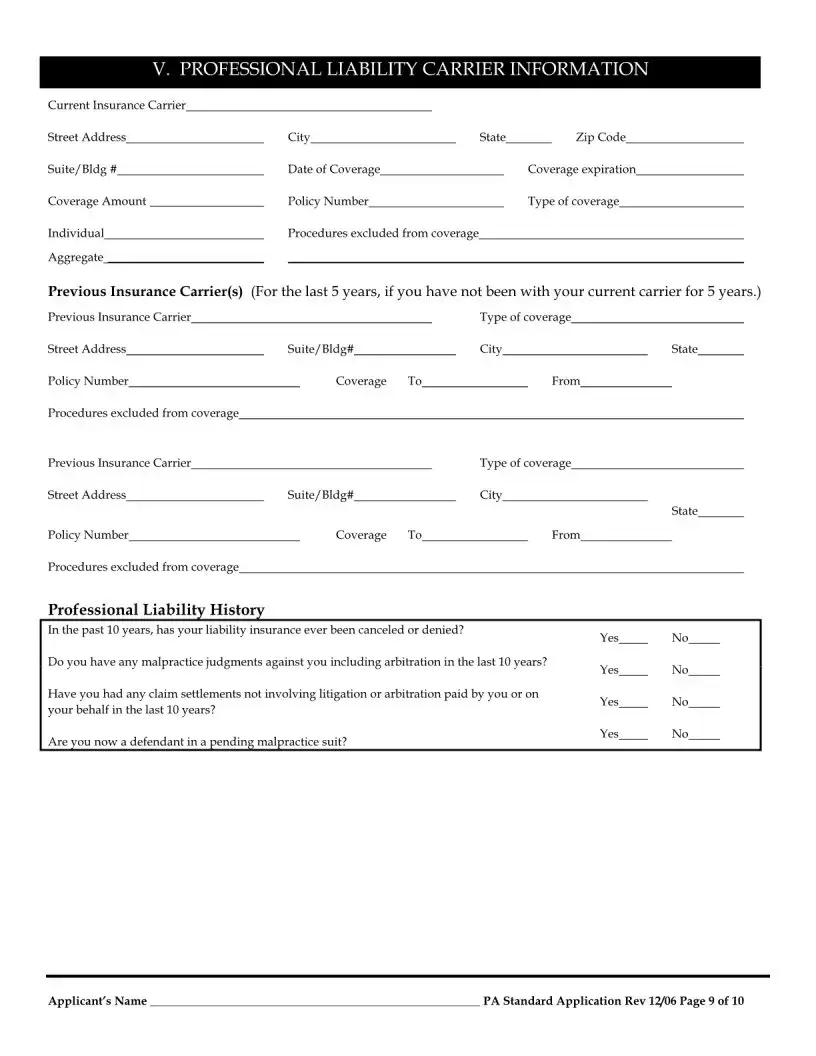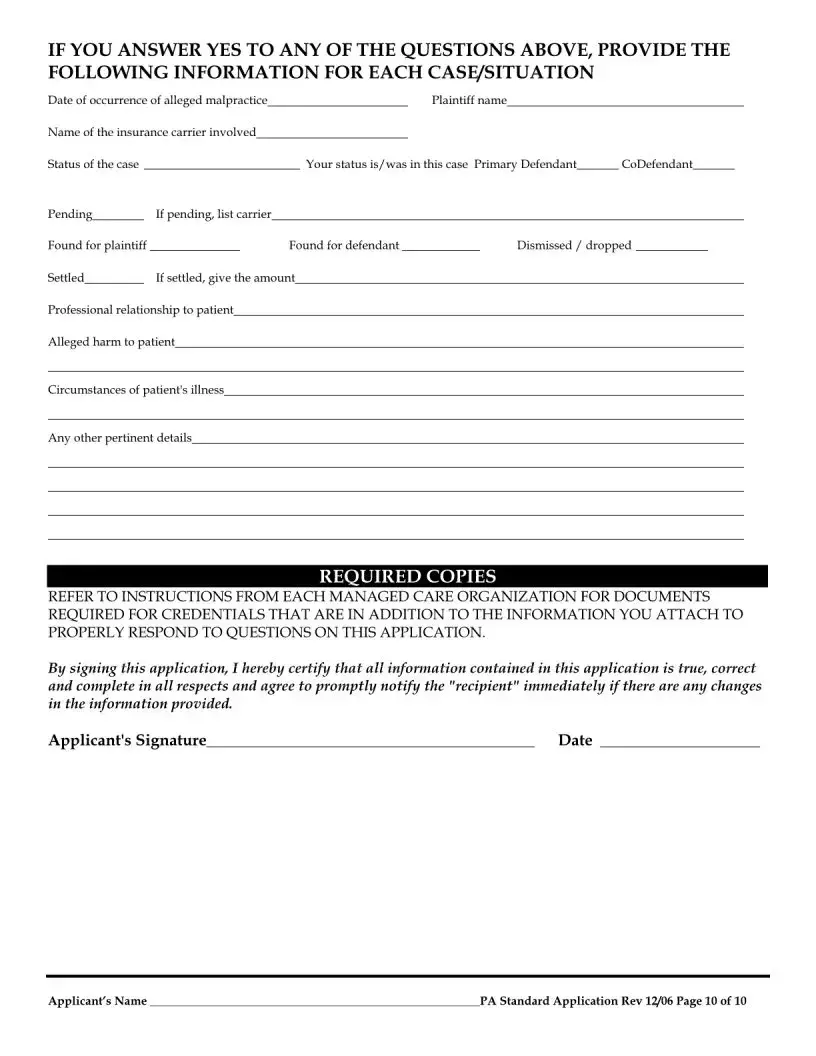What is the Pennsylvania Standard Application form?
The Pennsylvania Standard Application form is a document used by healthcare providers to apply for various affiliations, such as being a Primary Care Physician or a Specialist. It gathers essential information about the applicant's personal details, medical education, and professional experience. Completing this form accurately is crucial for the credentialing process.
How should I fill out the application?
This form should be typed or clearly printed in black or blue ink. Every question must be answered completely. If more space is needed, you should attach additional sheets and reference the specific question. If a question doesn't apply to you, simply write "N/A." It’s essential to provide all requested information to prevent delays in processing your application.
What happens if I submit an incomplete application?
If you submit an incomplete application, it cannot be processed. This means that your credentialing process will be delayed. To avoid this, double-check your application before submission to ensure every question is answered and that all necessary documents are included, as per the instructions provided by the managed care insurance companies.
What types of information do I need to provide?
You need to provide personal information, such as your name and contact details, as well as your educational background, medical licenses, and work history. Specifically, you will detail your medical school and training, any hospital affiliations, as well as your specialties and subspecialties if applicable. Be thorough and honest in all entries.
Do I need to provide additional documentation with my application?
Yes, along with the completed application form, you will need to submit other documents as required by the managed care insurance companies. These could include copies of your medical licenses, proof of education, and any other certifications. Be sure to refer to the specific instructions from each company for any details regarding documentation submissions.
